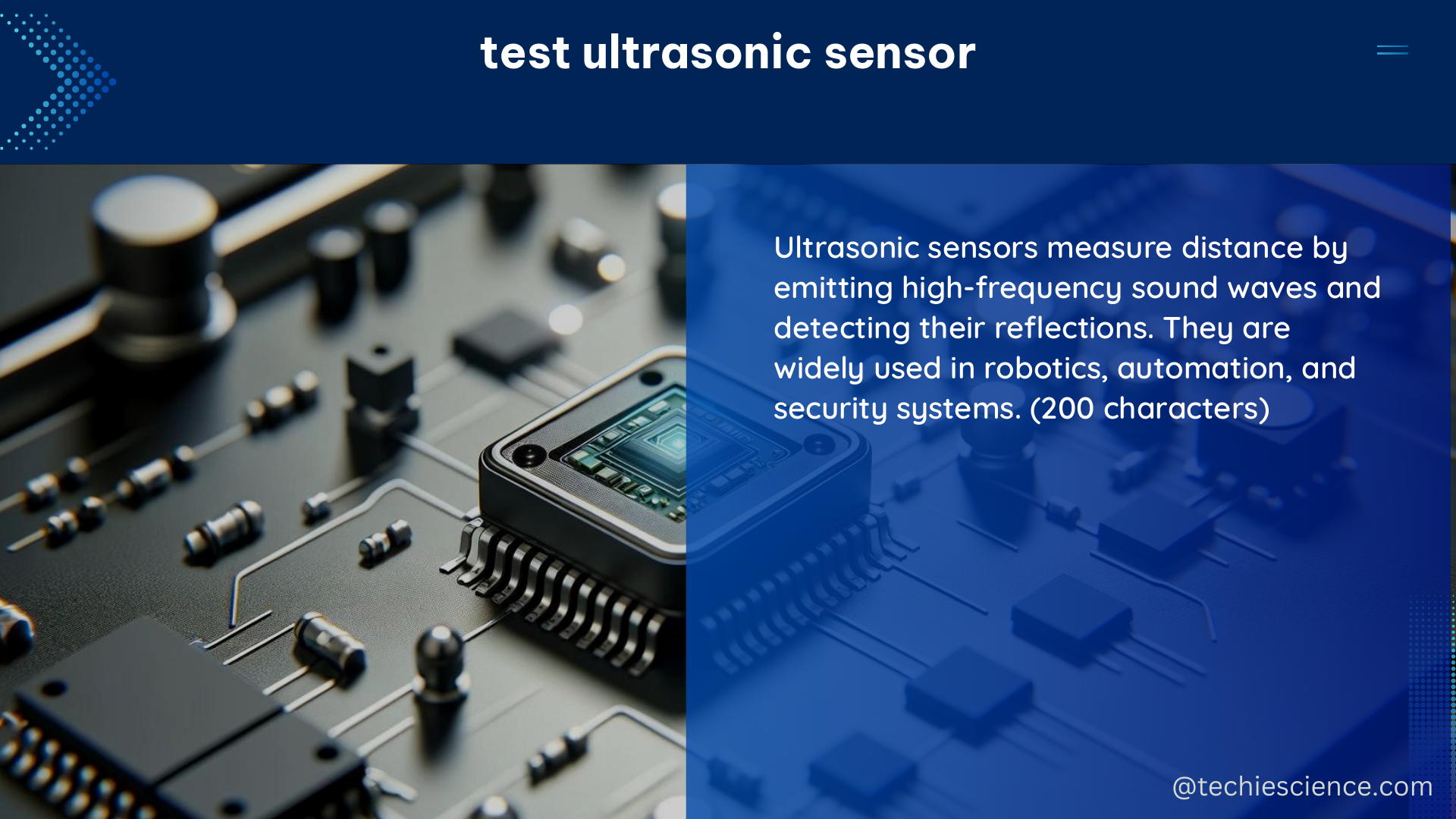The test ultrasonic sensor is a versatile and widely used device that measures the distance to an object by emitting high-frequency sound waves and analyzing the reflected signals. This sensor offers a range of measurable and quantifiable data points that can be used to evaluate its performance, making it a valuable tool in various applications, such as robotics, automation, and smart home systems.
Maximum Distance Measurement
The maximum distance the test ultrasonic sensor can measure is just under 2 cm, as determined by a rigorous testing protocol. This protocol involves the following steps:
- Calibration: The sensor is calibrated to ensure accurate distance measurements.
- Determination of Maximum Distance: The sensor is tested by placing a panel at increasing distances from the sensor, and the average distance measured over 100 samples is compared to the actual distance measured with a tape measure.
- Determination of Minimum Distance: The panel is moved closer to the sensor in increments of 0.1 cm until the sensor’s accuracy drops significantly, typically at a distance of around 1 cm.
- Determination of Uncertainty: 334 distance measurements are taken with the panel staged 25 cm away from the sensor. The distribution and frequency of the distance values are plotted in a histogram, and the estimated uncertainty is calculated as the range within which 68% of the values fall.
- Determination of Fastest Accurate Sample Rate: The time it takes for the sensor to record an accurate data reading is analyzed to determine the fastest speed at which the sensor can accurately sample data, which is found to be 0.0005 seconds.
Minimum Distance Measurement

The minimum distance the test ultrasonic sensor can accurately measure is between 2 and 1 cm, as determined by the testing protocol. At a distance of 1 cm, the sensor was found to be more than 200% inaccurate, returning an average distance of 3 cm.
Uncertainty and Accuracy
The uncertainty of the test ultrasonic sensor’s measurement system was determined by taking 334 distance measurements with the panel staged 25 cm away from the sensor. The distribution and frequency of the distance values were plotted in a histogram, which showed that the mean of the 334 samples was 25 cm. The estimated uncertainty is ±0 cm, as 68% of the values are within that range.
Analog Voltage Signal and Resolution
In addition to the distance measurements, the test ultrasonic sensor also produces an analog voltage signal from 0.0 V to 3.3 V, corresponding to a distance range of 0.2 to 1.5 m. This voltage signal is calibrated by the manufacturer, providing a linear relationship between the voltage and the measured distance.
The sensor’s microprocessor has an analog-to-digital conversion (ADC) function that provides 12-bit resolution, allowing for continuous measurement with a conversion time of 100 ns in stable conversion. This high resolution and fast conversion time can lead to a minimum distance resolution of 0.0003 m, further enhancing the sensor’s precision.
Applications and Considerations
The test ultrasonic sensor’s capabilities and limitations, as outlined in the data points and specifications, make it a suitable choice for a variety of applications, such as:
- Autonomous vehicles: The sensor’s ability to accurately measure distances up to 2 cm can be useful for obstacle detection and avoidance in self-driving cars.
- Robotics: The sensor’s fast sampling rate and high resolution can be beneficial for real-time positioning and navigation in robotic systems.
- Smart home automation: The sensor’s analog voltage signal and distance range can be utilized for applications like automated door opening, security systems, and smart lighting control.
When selecting the test ultrasonic sensor for a specific application, it is important to consider factors such as the required measurement range, accuracy, and sampling rate, as well as the environmental conditions in which the sensor will be operating. By understanding the sensor’s capabilities and limitations, users can make informed decisions and ensure optimal performance in their respective applications.
Reference:
- Ultrasonic Sensor Lab Report
- Ultrasonic Sensor Accuracy and Precision
- Statistical Analysis of Ultrasonic Sensor Data

The lambdageeks.com Core SME Team is a group of experienced subject matter experts from diverse scientific and technical fields including Physics, Chemistry, Technology,Electronics & Electrical Engineering, Automotive, Mechanical Engineering. Our team collaborates to create high-quality, well-researched articles on a wide range of science and technology topics for the lambdageeks.com website.
All Our Senior SME are having more than 7 Years of experience in the respective fields . They are either Working Industry Professionals or assocaited With different Universities. Refer Our Authors Page to get to know About our Core SMEs.